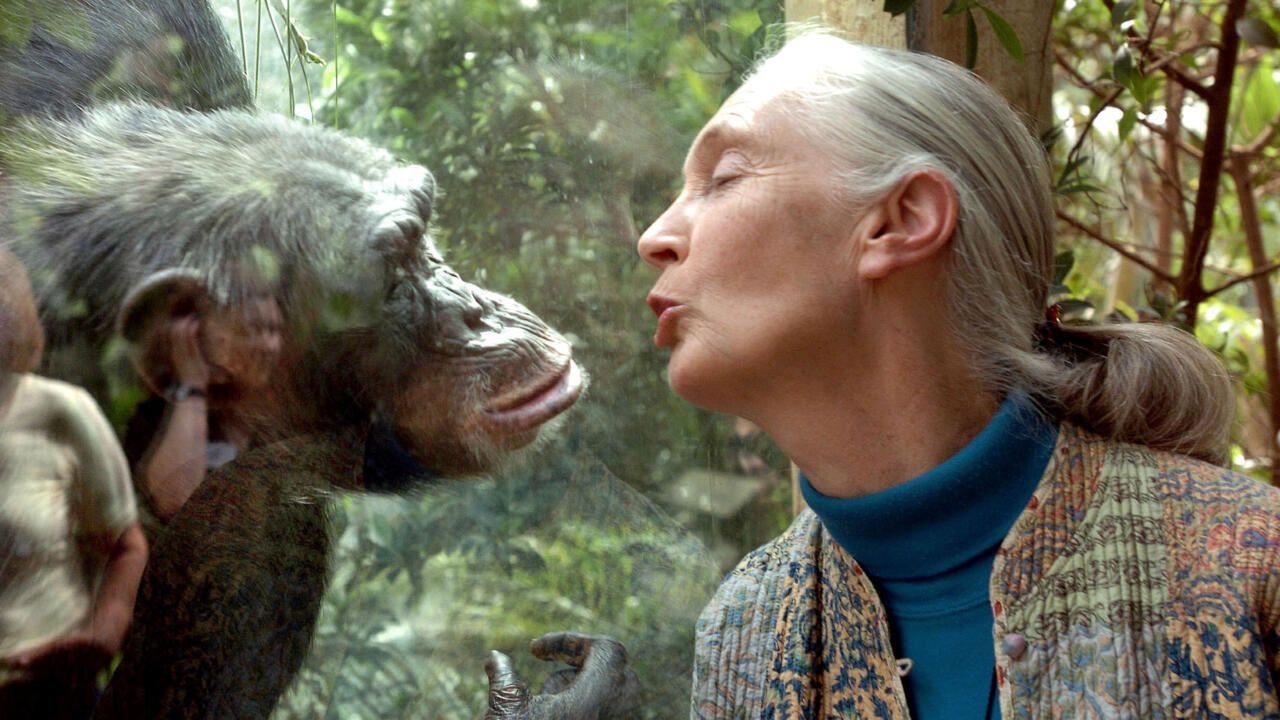Jane Goodall, one of the world’s most respected conservationists, passed away in Los Angeles at the age of 91 while on a speaking tour. Her death was confirmed by the Jane Goodall Institute, headquartered in Washington, D.C.
Born in Britain, Goodall’s fascination with animals began in childhood, inspired by Tarzan, Dr. Doolittle, and her toy chimpanzee named Jubilee. In 1956, she moved to Africa after an invitation from a friend in Kenya. There, she met Louis Leakey, the famous paleoanthropologist, who encouraged her to study chimpanzees at Gombe Stream Reserve in present-day Tanzania.
On July 14, 1960, Goodall began her fieldwork. Just months later, she observed something revolutionary — a chimp named David Greybeard using a grass stem to catch termites, proving that humans were not the only toolmakers.
Rise to Global Recognition
At just 29 years old, her detailed 7,500-word account of chimpanzee behavior was published in National Geographic in 1963, complete with photographs by wildlife photographer Hugo van Lawick, whom she later married.
Her vivid accounts described not only chimpanzee behavior but also the dangers she faced — from malaria to predators like leopards and cobras. Her findings reshaped science, as she revealed that chimps:
- Used tools
- Ate meat
- Engaged in social rituals
- Practiced organized aggression
Prominent evolutionary biologist Stephen Jay Gould called her work “one of the Western world’s great scientific achievements.”
Books, Documentaries, and Television Presence
Goodall’s engaging storytelling transformed her into a household name. She wrote acclaimed books such as My Friends, the Wild Chimpanzees (1967), In the Shadow of Man (1971), and Through a Window (1990).
Television further amplified her fame. In 1965, CBS aired a prime-time documentary on her research, followed by numerous international specials. Her presence — calm, knowledgeable, and telegenic — helped millions connect with the “rich emotional life” of chimpanzees.
Scientific Contributions and Legacy in Primatology
Goodall revolutionized primate research by naming chimpanzees instead of numbering them. She closely observed individuals like Flo, Fifi, and David Greybeard, documenting their parenting, social bonds, and leadership structures.
She discovered that:
- Female chimps give birth only once every 4.5–6 years
- First-time mothers often hid infants from males, unlike experienced mothers
- Chimps demonstrated complex social communication
Her insights inspired women such as Dian Fossey and Biruté Galdikas to enter primatology, opening doors for female scientists in a male-dominated field.
Personal Life and Conservation Work
Goodall married Hugo van Lawick in 1964 and had one son, Hugo Eric Louis (“Grub”), in 1967. She later remarried Derek Bryceson, Tanzania’s national parks director, who passed away in 1980.
In 1977, she founded the Jane Goodall Institute, now a global nonprofit with offices in over 35 countries. Its Roots and Shoots program, launched in 1991, educates youth on conservation in more than 120 nations.
From the 1970s onward, she became an outspoken advocate against poaching, deforestation, and the use of wild chimps in research or captivity.
Honors and Later Years
Dr. Goodall earned her PhD at Cambridge University in 1965, despite not having an undergraduate degree. She went on to write 32 books, 15 for children. Her final work, The Book of Hope (2021), reflected her optimism for humanity.
Her many honors include:
- National Geographic Hubbard Medal (1995)
- Templeton Prize (2021)
- Dame of the British Empire (2003)
- Presidential Medal of Freedom (2025, from U.S. President Joe Biden)
In 2022, Mattel released a Jane Goodall Barbie doll made of recycled plastic, honoring her legacy.
Goodall is survived by her son, sister Judy Waters, and three grandchildren.
Conclusion
Jane Goodall’s life was more than science — it was a story of passion, courage, and a deep bond with nature. From her first days in the Tanzanian forests to her global mission for conservation, she transformed how the world understands chimpanzees and inspired generations to protect the planet. Her pioneering research and tireless activism remain a testament to the power of curiosity, empathy, and determination.

